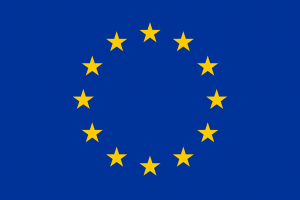Travelling to Europe (ETIAS)
You may have heard that some changes are coming to the European travel process. If you are an American citizen traveling to the United States starting in October 2025, here is what you need to know right now. Last updated: April 2025
Do I need visa or any type of registration to travel to Europe?
No. If you are a U.S. citizen, you only need your passport and no other documentation to enter the following European countries: Austria, Belgium, Bulgaria, Croatia, Cyprus, Czech Republic, Denmark, Estonia, Finland, France, Germany, Greece, Hungary, Iceland, Italy, Latvia, Liechtenstein, Lithuania, Luxembourg, Malta, Netherlands, Norway, Poland, Portugal, Romania, Slovakia, Slovenia, Spain, Sweden, and Switzerland.
There is no visa obligation for U.S. citizens.
Will I need a visa or any type of registration to travel to Europe in the future?
If you are a U.S. citizen, you will not need any additional registration besides your passport if you travel to the aforementioned countries before 2026.
The electronic registration system ETIAS (explained below) is scheduled to be introduced in the last quarter of 2026. The exact date will be announced at least six (6) months before the system enters into operation.
What is the European Travel Information and Authorisation System (ETIAS)?
ETIAS is an entry requirement for visa-exempt nationals similar to ones already in place in the United States (ESTA), Canada, United Kingdom, and Australia.
ETIAS is not a visa. It only covers short-term stays to the 30 aforementioned countries. It will cost 7 euros (just over $7) and be valid for three (3) years or until your passport expires.
When will ETIAS go into effect?
ETIAS is scheduled to be introduced in the last quarter of 2026. The exact date will be announced at least six (6) months before the system enters into operation.
The Entry/Exit System (explained below) is expected to be introduced in October 2025.
What is the Exit/Entry System (EES)?
Starting in October 2025, non-EU nationals travelling to the Schengen Area for a short stay will get their pictures and fingerprints taken at the external borders of 29 European countries. This is a system similar to the one used by the United States for its foreign visitors. The EES modernises border management by increasing the efficiency and quality of processes at the border. This simplifies travel and makes it safer.
How long does the ETIAS travel authorization remain valid?
Your ETIAS travel authorisation will be valid for three years or until your travel document expires – whichever date comes first. For example, if your passport is valid for two years, your ETIAS travel authorization will only be valid for two years.
Where do I apply?
You will be able to apply using the official ETIAS website or the official ETIAS mobile app once they are live.
Third-party intermediaries can be authorised by you to apply for an ETIAS travel authorisation on your behalf. Before you decide to use these services, make sure that you verify the quality of their services, be aware of additional charges, and determine how they protect your data.
More questions and answers will be published here as we get closer to the implementation date. Stay tuned!
If you are looking for more information, please visit the official EES/ETIAS website. You can also contact the EU Delegation to the United States at delegation-usa-info@eeas.europa.eu.
